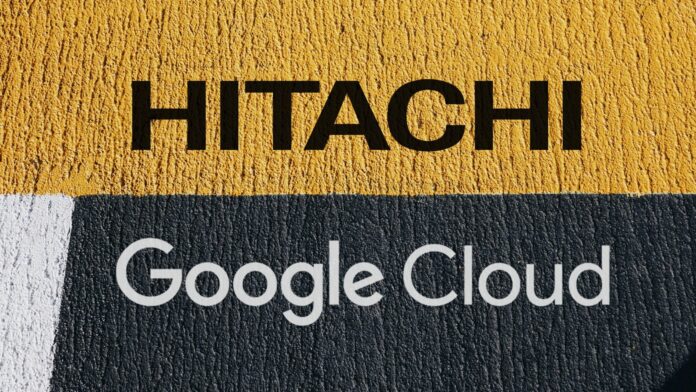Hitachi and Google Cloud have signed a multi-year deal to collaborate on generative AI for Industry 4.0. Hitachi is to form a brand new business unit which will use Google Cloud’s large language models and development platform, plus other cloud technologies, to underpin its own products and services, notably those offered by its Lumada digital-change services business.
Hitachi’s new Google-tied business unit, called Hitachi Google Cloud Business Unit, will be attended also by the launch of a new Google Cloud Center of Excellence, the two companies said. Hitachi has appointed its digital engineering subsidiary GlobalLogic to lead the project. It said the new setup will “rapidly scale Google Cloud technology to new and existing enterprise customers”.
As well, Hitachi will incorporate training on Google Cloud’s generative AI products – crucially its Gemini large language models models and Vertex AI development platform – as part of its own generative AI training programme, offered to its group companies and enterprise customers. It said: “[This] will… ensure large-scale organisations [can] improve how they operate with AI.”
The arrangement will see Hitachi use Gemini models to build enterprises solutions to modernise legacy software systems, and adopt Google Cloud’s Contact Center AI for customer service experiences. New solutions will work with GlobalLogic’s so-called ‘platform-of-platforms’ architecture, it said. Hitachi’s new generative AI solutions will work at the edge and in the cloud.
The duo will “better align their sales, marketing, and engineering teams” as part of the deal, as well. Hitachi said it will train 50,000-odd engineers on generative AI using Google Cloud’s various models, tools, and software systems. Hitachi is targeting enterprise customers in the energy, manufacturing, automotive, and government (“digital services”) sectors.
Toshiaki Tokunaga, executive vice president and executive officer at Hitachi, said: “Hitachi will leverage Google Cloud’s AI capabilities to improve and enhance employee productivity and accelerate innovation. By augmenting the capabilities of our developers and customer units with Google Cloud generative AI solutions, Hitachi will be able to better serve the needs of its customers in diverse industries and across complex domains.”
Nitesh Banga, president and chief executive at GlobalLogic, said: “Hitachi is strategically aligning its go-to-market approach together with Google Cloud to drive tangible results. We are establishing clear pathways for collaboration, ensuring enhanced efficiency and acceleration in delivering solutions to our collective clients. This investment… will provide the energy, focus, and teamwork essential [to accelerate] time-to-market [and translate] innovation into swift revenue growth.”
Thomas Kurian, chief executive at Google Cloud, said: “To solve complex business challenges with generative AI, enterprises need advanced technology and the technical expertise to successfully deploy it throughout their organisations. Our partnership with Hitachi will provide customers with the resources needed to optimally build, implement, and manage every stage of their generative AI projects.”

